new posts in all blogs
Viewing: Blog Posts Tagged with: 2015, Most Recent at Top [Help]
Results 1 - 25 of 420
How to use this Page
You are viewing the most recent posts tagged with the words: 2015 in the JacketFlap blog reader. What is a tag? Think of a tag as a keyword or category label. Tags can both help you find posts on JacketFlap.com as well as provide an easy way for you to "remember" and classify posts for later recall. Try adding a tag yourself by clicking "Add a tag" below a post's header. Scroll down through the list of Recent Posts in the left column and click on a post title that sounds interesting. You can view all posts from a specific blog by clicking the Blog name in the right column, or you can click a 'More Posts from this Blog' link in any individual post.
An Ember in the Ashes. Sabaa Tahir. 2015. 446 pages. [Source: Library]
First sentence: My big brother reaches home in the dark hours before dawn, when even ghosts take their rest.
Premise/plot: An Ember in the Ashes is a great YA fantasy novel with dashes of romance added into the mix. Anyone who enjoys suspense, action, and adventure should give this one a try.
Narration alternates between Laia, a Scholar slave, and Elias, a Mask. Elias hates being a soldier, or soldier in training. He does not want to use and abuse slaves. He doesn't like being ordered to kill, and he dreads the day he'll have to give orders to others to kill. But he lives in a cruel society where kindness, compassion, sincerity are signs of weakness. To 'be human,' to 'feel' is to put a target on yourself. If Elias doesn't keep his real thoughts and desires to himself, he might not survive. Laia is just as vulnerable as Elias in some ways. But even more so since she's a girl and from the Scholar tribe or faction. Most see her as dispensable property. She wants what Elias wants only double. He wants freedom; she wants freedom for herself and her brother who has been imprisoned. She'll risk her life for the smallest chance of saving his.
Those two aren't the only characters we come to know--to love, to like, to hate. Others include Helene, Marcus, Cain, Keenan, Cook, Izzy, Mazen, the Commandant, Spiro Teluman. Notably I think Keenan and Helene and Marcus are key characters in this one.
My thoughts: I loved rereading this compelling fantasy. Action abounds, yet the characterization is so good that I'm tempted to call this a character-driven book. Since I usually dislike dual narrators, it says something that I loved this one so much!
© 2016 Becky Laney of
Becky's Book Reviews
Won Ton and Chopstick: A Cat and Dog Tale Told in Haiku. Lee Wardlaw. Illustrated by Eugene Yelchin. 2015. 40 pages. [Source: Library]
First sentence: It's a fine life, Boy. Nap, play, bathe, nap, eat, repeat. Practice makes purrfect.
Premise/plot: Won Ton returns in a second picture book in Won Ton and Chopstick. Won Ton is most upset--at least at first--at the new 'surprise' at his house. The surprise is a PUPPY. The family may call the puppy, "Chopstick," but Won Ton calls him PEST. This picture book has plenty of adventures for the pair.
My thoughts: I really loved Won Ton. And this second book is fun. I thought the repeating refrain of the first book was fun, but I think it's even better the second time around.
Puthimoutputhimoutputhimoutputhim--wait! I said him, not me!
That never gets old!!!
Text: 4 out of 5
Illustrations: 4 out of 5
Total: 8 out of 10
© 2016 Becky Laney of
Becky's Book Reviews
Bears and a Birthday. Shirley Parenteau. 2015. Candlewick. 32 pages. [Source: Review copy]
First sentence: The makings for a cake are there. The recipe's ready. Where are the bears?
Premise/plot: 4 small bears (Fuzzy, Floppy, Yellow, Calico) work together to create a surprise for Big Brown Bear on his birthday. Readers see the bear mixing, baking, frosting a cake as well as wrapping his birthday present. Big Brown Bear gets quite suspicious and wants to know what his friends are doing. But, of course, no peeking is allowed.
My thoughts: This one is cute and predictable. If your little one loves the other books in the series, this one is definitely worth picking up. It would also serve as a good introduction to the series. I don't think the books have to be read in any certain order!
Text: 3 out of 5
Illustrations: 4 out of 5
Total: 7 out of 10
© 2016 Becky Laney of
Becky's Book Reviews
March Book Two. John Lewis. Andrew Aydin. Illustrated by Nate Powell. 2015. 189 pages. [Source: Library]
First sentence: January 20, 2009. Brother John--Good to see you. You ready?
Premise/plot: March is the graphic novel autobiography of John Lewis. So far, there are three volumes in this autobiography. Today, I am reviewing book two. Lewis gives us an incredible behind-the-scenes glimpse of the civil rights movement. This one also has a built-in framework: it is set in 2009, and he's reflecting on his life before attending the Inauguration.
My thoughts: I can't imagine anyone reading the first book and not wanting to continue on with book two. My guess? They'd want it IMMEDIATELY. This second book picks up the story of the civil rights movement in November 1960. (The 'present' day story is still January 2009). This second volume is even better, in my opinion. It covers almost four years: the rest of 1960, 1961, 1962, and 1963. OH THE INTENSITY. I don't know how it is both possible to stay big-picture and yet include so many details, but, the writing is so wonderful, the art is so wonderful, that it just really puts you right there and keeps you engaged.
Definitely would recommend book one and two. I'm excited to start book three soon!
© 2016 Becky Laney of
Becky's Book Reviews
Mustache Baby Meets His Match. Bridget Heos. 2015. 40 pages. [Source: Library]
First sentence: Baby Billy was born with a mustache.
Premise/plot: This is the sequel to Mustache Baby. In this second book, Baby Billy is mostly at odds with Baby Javier, a bearded baby. The problem? Baby Javier and Baby Billy both want to be THE BOSS and tell the other what to do. Also both babies want to be THE BEST. Can these two learn to be friends and get along?
My thoughts: I liked this one. I did. I don't know that I LOVED, LOVED, LOVED it like I did the first book. But I liked it. The illustrations make this a clever read. It's the little details--often in the illustrations--that bring a smile. For example, when the two compete at running for President.
Text: 4 out of 5
Illustrations: 5 out of 5
Total: 9 out of 10
© 2016 Becky Laney of
Becky's Book Reviews
Why'd They Wear That? Sarah Albee. 2015. National Geographic. 192 pages. [Source: Library]
Sarah Albee's Why'd They Wear That? Fashion as the Mirror of History is a (relatively) quick and entertaining read. Why 'relatively' quick? I read it in one sitting and found it fascinating. Other readers might not find it so.
This book seeks to do so very much: to expose readers (young readers--upper elementary through young adult) to dozens of cultures over the last ten thousand years and ultimately answer WHY DID THEY WEAR THAT? Think HORRIBLE HISTORIES only with a slightly refined focus on fashion.
Is the focus on fashion? Yes and no. Yes, in that fashion is basically discussed on every page. No, in that it is HISTORY that takes center stage. This book is all about building context. Answering the 'WHY' of the title. (It is not focused on WHAT they wore as to possible reasons WHY.) I also saw connection opportunities for linking to art appreciation or even archaeology. 80% of the book is illustrated by artwork not photographs.
I definitely liked that this leaned more towards focusing on history and culture than strictly on fashion. I definitely liked the sidebars. But unfortunately disagreed with the designer who thought it was a good idea to have black text on dark blue. Couldn't read a word of those sidebars.
What I liked best about this one was the amount of detail and research that went into the book.
Perhaps because so much skin was exposed to the drying sun, Egyptians used liberal amounts of oil on their bodies, made from animal fat, olive oil, and other plants. Hair could be conditioned with a paste made from gazelle dung and hippopotamus fat. At dinner parties slaves placed cones of perfumed animal fat on guests' heads. Over the course of the evening, the fragrant grease melted and ran down the hair and neck, scenting and conditioning the hair and bathing the wearer in fragrant grease. Scent cones were not just for the wealthy. Musicians, dancers, servants, and children all wore them as well. (17)
Being a fan of Horrible Histories, I looked for connections. I found plenty!
© 2016 Becky Laney of
Becky's Book Reviews

By:
Becky Laney,
on 9/12/2016
Blog:
Becky's Book Reviews
(
Login to Add to MyJacketFlap)
JacketFlap tags:
2015,
books reviewed in 2016,
dystopia,
YA Fiction,
YA Fantasy,
YA Romance,
series book,
review copy,
YA Paranormal,
Add a tag
The Stars Never Rise. Rachel Vincent. 2015. 368 pages. [Source: Review copy]
First sentence: There's never a good time of day to cross town with a bag full of stolen goods, but of all the possibilities, five a.m. was the hour best suited to that particular sin.
Premise/plot: Nina Kane, the heroine, is contemplating pledging herself to the Church--the Unified Church when the novel opens. But a few things get in her way of making that commitment. First, her fifteen year old sister, Mellie, rebels and flees a school required assembly, second, comes the big reveal that Mellie is PREGNANT. Since pregnancy requires a license and the full permission of the church beforehand, that's a BIG one. Third, the WAY their mom reacts to the news that she's going to be a grandma turns Nina's world upside down and then some.
Things you should know:
It's a dystopian novel (YA, of course) with a very urban setting for the most part.
There is NOT a love triangle, but, there is a romantic twist.
You should forget everything--and I do mean EVERYTHING--you know about "the church." This futuristic UNIFIED CHURCH should not in any way be connected to the actual Christian church of this or any age.
The book is all ACTION, ACTION, DRAMA.
What is predictable, in a way, is that the heroine comes into her own and gains an ability--an advantage--for surviving in the crazy world she lives in.
The world-building is great for the most part. There is some info-dumping squeezed into the novel early on. Nina is quizzing kindergartners on some fairly basic material....material that the author definitely wants readers to know.
My thoughts: If you look at the bare facts of the premise, there would be no reason in the world for me to like it--or love it even. It's PARANORMAL. There are demons and exorcists. And even zombies, though they are not called such. The church instead of standing for good, is a downright evil institution. And yet, I could not put this one down. I read it in one day. I read both books in the series over about a thirty hour period.
© 2016 Becky Laney of
Becky's Book Reviews
The Heart of Betrayal (Remnant Chronicles #2) Mary E. Pearson. 2015. Henry Holt. 470 pages. [Source: Library]
First sentence: One swift act. I had thought that was all it would take.
Premise/plot: The Heart of Betrayal is the second book in Mary E. Pearson's The Remnant Chronicles. First, I have to say: READ THE FIRST BOOK before you even think of picking up this one. I think the first book will sufficiently hook you. You can pick it up knowing that the second and third book likely won't disappoint. Second, this review will probably contain a few spoilers for book 1 but a bare minimum of book 2.
So Lia, our heroine and runaway princess, has been captured and taken to an enemy nation, Venda. She knew little, if anything, about Venda before being taken hostage by THE ASSASSIN who was under strict orders to KILL her not BRING HER BACK A PRISONER. But Kaden could not, would not, kill her--though he considers himself to be a very loyal follower of the Komizar. Rafe, aka The PRINCE, has followed her to Venda, followed her straight into danger because though there relationship started out built almost exclusively on lies...him pretending to be a farmer...her pretending to be work in a tavern...he considers himself head over heels in love with her now. Willing to risk everything to save her from certain death. Lia learns a lot about herself, Kaden, the Komizar, and VENDA. The book is ACTION-PACKED and full of drama.
Is there a love triangle? Yes, no, maybe. Kaden certainly finds himself drawn to Lia, and, he does share his quarters with her...and perhaps a kiss or two. But Lia does not see him in that way at all. She regards him as someone to be manipulated and used in order aid her eventual escape. Competition for her heart? Not really. And the Komizar, well, does he fit into a triangle? Well, only if you consider physical threats to be a form of wooing. Which I DON'T. But their lips do meet... Rafe is not jealous so much as OUTRAGED that "his" girl is being essentially assaulted.
My thoughts: Could NOT put this one down. Seriously intense. Loved it. At first I thought I would be absolutely lost since it's been almost two years since I read the first book. But I soon found myself swept up into the drama...the politics...the romance...the action.
This series is easy to recommend.
© 2016 Becky Laney of
Becky's Book Reviews
The Monopolists. Mary Pilon. 2015. Bloomsbury. 320 pages. [Source: Library]
First sentence: One day during the depths of the Great Depression, an unemployed salesman named Charles Darrow retreated to his basement.
Premise/plot: Love Monopoly? Hate Monopoly? Mary Pilon's The Monopolists is a fascinating read to be sure. Who invented Monopoly? Who did NOT invent Monopoly? Why does it matter?
The Monopolist tells the story of the woman who invented the game, a game with two very different sets of rules. She didn't call her game 'monopoly' but 'The Landlord's Game.' The general game board concept and rules of play were hers. This was in 1904. In her community, it became quite popular, even an obsession of sorts. So much so that it spread across the nation as one person--or one couple--would teach another and another and another and another. People would create their own homemade game boards. The rules were taught but not written down. For decades, people were playing this game, loving this game. It wasn't a game you could buy at the store, though. 'The Landlord's Game' wasn't the only real-estate game that predates Parker Brothers' Monopoly. The game Finance also did. It also being offspring of Lizzie Magie's original game. Though I think perhaps by that time, it had just one set of rules. Charles Darrow, the man whose name would be associated with the game MONOPOLY, was taught the game by friends. He later claimed he invented the game. The couple who taught Darrow spent a lot of time in Atlantic City with the Quakers who LOVED the game and changed their own game boards to reflect their lives. These place names would stay with the game and be the names that we come to associate with Monopoly. The rules, the layout of the game board, the place names, all were essentially handed to Darrow ready-made.
Most of this book focuses on a lawsuit in the 1970s and early 1980s. Parker Brothers was trying to stop one man--Ralph Anspach--from selling his own game, a game called ANTI-MONOPOLY. Anspach was an economics professor, I believe. It would take a lot of time, effort, stamina, and courage to stay in the fight.
My thoughts: I really enjoyed this one. I enjoyed it even more than I thought I would. I don't love playing Monopoly, but, I found the game-playing culture of the twentieth century to be FASCINATING. There is something to be said for people spending time together around a table and actually talking and having fun doing the same thing. This was written in an engaging way. I'd definitely recommend it.
© 2016 Becky Laney of
Becky's Book Reviews

By:
Becky Laney,
on 8/23/2016
Blog:
Becky's Book Reviews
(
Login to Add to MyJacketFlap)
JacketFlap tags:
graphic novels,
slavery,
J Fiction,
MG Fiction,
library book,
Harry N. Abrams,
mg historical,
j historical,
2015,
books reviewed in 2016,
Add a tag
The Underground Abductor. (Nathan Hale's Hazardous Tales #5) Nathan Hale. 2015. Abrams. 128 pages. [Source: Library]
First sentence: It is time to hang this spy! Are you sure? Can't we get one more story out of him first?
Premise/plot: Nathan Hale sets out to prove that America isn't perfectly perfect, and, that America has in fact "taken part in some truly horrible, despicable, abominable, atrocious, downright evil acts." He speaks, of course, of slavery. And in this graphic novel, he tells the story of Harriet Tubman (aka Araminta Ross). It's an intense story without a doubt. He speaks of her growing up in slavery, the abuses she faced, the challenges she overcame, her marrying a free man, her decision to run away, her decision to run back into slavery. For it became her mission to travel back and forth between North and South saving slaves--escorting slaves to safety, to Canada, in fact. All via the "underground railroad" of abolitionists. Some of this information I was familiar with, but, some was new to me. For example, I was not aware of her head injury perhaps leading to her narcolepsy. I had no idea of her visions either!
My thoughts: I am so glad I discovered this series. I really have enjoyed reading these books practically back to back. I would definitely recommend all of the books in the series. I hope it is a very LONG series.
© 2016 Becky Laney of
Becky's Book Reviews
The Cafe Mystery (The Whodunit Detective Agency #4) Martin Widmark. Illustrated by Helena Willis. 2003/2015. 80 pages. [Source: Library]
First Sentence: "Mmm, pastries!" said Maya. "Cakes and muffins! Yum," added Jerry. "Can you believe everything that's been happening in there?" asked Maya, gesturing toward Cafe Marzipan, Pleasant Valley's best bakery.
Premise/plot: Jerry and Maya are kid detectives with a new toy: a digital camera. And that camera will come in handy for their next case. The bakery has suffered several robberies in the past year. No one has been able to figure out who the robber is. The robber just happens to hit every time there is a large amount of cash in the cash register. (An event that isn't all that common.) Can Jerry and Maya figure out which of the employees is working with the robber...and why?
My thoughts: I like this series. I do. I am enjoying spending time in Pleasant Valley. Jerry and Maya are very good at what they do.
© 2016 Becky Laney of
Becky's Book Reviews

By:
Becky Laney,
on 8/2/2016
Blog:
Becky's Book Reviews
(
Login to Add to MyJacketFlap)
JacketFlap tags:
friendship,
J Fiction,
international literature,
J Mystery,
2003,
early chapter book,
library book,
2015,
books reviewed in 2016,
Add a tag
The Circus Mystery (The Whodunit Detective Agency #3) Martin Widmark. Illustrated by Helena Willis. 2003/2015. 80 pages. [Source: Library]
First sentence: It was summertime in the town of Pleasant Valley. The sun had been shining brightly all day, and a gentle breeze rustled through the leaves of the trees in town.
Premise/plot: Jerry and Maya are two kids with a detective agency. A circus is coming to town. This circus has a bad reputation, however. Whatever towns the circus visits, a series of robberies and thefts occur. They have every reason to believe that their town will be no different, that the thief will rob people in the crowd. The police chief and Jerry and Maya attend both performances of the circus in order to see if they can solve the case.
My thoughts: I like this series well enough. Early chapter books are key in reading development. And who doesn't like a good series? Kids need series books; they need the predictability and the formulaic structure. I would definitely recommend the series.
© 2016 Becky Laney of
Becky's Book Reviews
The Heir. (Selection #4) Kiera Cass. 2015. HarperCollins. 346 pages. [Source: Library]
I have very mixed feelings on The Heir by Kiera Cass. That isn't a huge surprise. I had mixed feelings about the first three books as well. The first three books in the series focused on Princess Eadlyn's parents--America and Maxon. I found the books both silly and irresistible at the same time. If I found the books on the silly, ridiculous, predictable side, why did I care so much about what happened and who ended up together?! That was the question then, and, to some extent that remains the question. The difference being I am less attached to Princess Eadlyn than I was to her father, Prince (now King) Maxon.
So. America and Maxon have four children together: twins Eadlyn and Ahren, and two younger boys that barely enter into the story, or, perhaps are completely forgettable no matter how many times their names are dropped. Eadlyn being born seven minutes before her brother is the heir to the crown. She's about eighteen or so when the story opens. And readers are led to believe that she may become Queen much sooner than anyone thinks. Conveniently perhaps America and Maxon have not aged well it seems. Though young when they married, and though their oldest is just eighteen, they are talked about as if they're closer to sixty or sixty-five than forty! Granted, we don't know for sure how long they waited after marrying to have children, but, even if it was five or six years--they still shouldn't be over forty-five! The fact that they are presented as so decrepit and ancient--their health so fragile--frustrated me. And I did not like the ending at all. Trust me on that.
So is Princess Eadlyn likable? I don't think she's meant to be. I think we're supposed to struggle with liking her perhaps? She struggles with being an actual human being.
So "to save the monarchy" the parents are strongly-strongly encouraging their daughter to hold a Selection and get married. Thirty-five young men will be coming to the palace just for her. One of the selected is not a stranger at all, but, someone she's a little too familiar with on the surface, someone who has grown up in the palace, someone who's always been friendlier with her brother than herself. His name is Kile. And he gets the first kiss, though it is staged. Other men of note, Henri (Swedish cook who needs an interpreter) Eric (the interpreter and not really an option for the selection, at least not officially), and Hale (he doesn't seem as obvious a choice as the others, but, he isn't as forgettable or as obnoxious as the others, so, I wouldn't be surprised if he makes it to the top six or seven at least). Since Eadlyn struggles with, you know, actually being human herself, it's hard for her to talk with others and be herself. I don't know that I have a favorite-favorite, but I'm leaning towards Henri.
The world Cass has created still doesn't seem fully fleshed out and lived in, like it makes sense logically. And the political, social, cultural side of it still seems a bit flimsy, but this book like the other is just oddly readable and entertaining.
© 2016 Becky Laney of
Becky's Book Reviews
Poems in the Attic. Nikki Grimes. Illustrated by Elizabeth Zunon. 2015. Lee & Low. 48 pages. [Source: Library]
First sentence: Grandma's attic is stacked with secrets.
Premise/plot: Poems in the Attic is a picture book about a seven year old girl who discovers a box of her mother's poems in her grandmother's attic. Her mother started writing poems when she was just seven. Our heroine, the little girl, decides to start writing poems of her own. Readers see these poems--mother and daughter--side by side. The mother's poems are about growing up a 'military brat' moving from place to place every year or so. The daughter's poems are doubly reflective.
My thoughts: I liked this one. I liked the premise of it especially. A girl coming to appreciate her mother in a new light. A girl learning to express herself through poetry. The book celebrates family, poetry, and a sense of life as one big adventure.
That being said, poetry tends to be hit or miss with me. I sometimes enjoy poetry. Sometimes not so much. I didn't love the short poems in this one as much as I wanted. I liked them okay. I just wasn't WOWED by them. I do like the celebration of family. And the illustrations were great. Eleven places were captured in the mother's poems. And the author's note was interesting. So this one is worth your time.
© 2016 Becky Laney of
Becky's Book Reviews
War of Two. John Sedgwick. 2015. Berkley. 432 pages. [Source: Library]
I definitely enjoyed reading John Sedgwick's War of Two: The Dark Mystery of the Duel Between Alexander Hamilton and Aaron Burr, and Its Legacy for America. I thought it did a good job chronicling the lives of both founding fathers. The attention is rightly divided between the two men. Readers learn not just about politics and war but also more personal affairs such as family and home life.
Part one is titled "The Roots of the Hatred." Part two is titled "The Battle is Joined." Part three is titled "To the Death." Part four is titled "And Then There Was One." Each chapter title seems to be taken from a direct quote from a primary source.
I was familiar with the basics of this story having listened to Hamilton a couple dozen times. I think anyone interested in learning more would profit from reading this one.
From the introduction, "Hamilton came to America alone at sixteen, a penniless immigrant, from the West Indian island of Saint Croix, the only one of the original Founding Fathers not born on the continent" (xxii). And, "As for the illegitimate Hamilton, Adams derided him as "the bastard brat of a Scotch peddler" (xxii). And, "Hamilton could take four hours to say what Burr could say in thirty minutes" (xxii).
From chapter five, John Adams on New Yorkers [like Hamilton], "They talk very loud, very fast, and altogether. If they ask you a question, before you can utter three words of your answer they will break out upon you again and talk away." (38)
From chapter six, "Hamilton was primarily a man of action, driven to achieve; his strongest feelings stemmed from ambition, and indignation when his aspirations were not met." (44)
From chapter eight, "As Hamilton listened to the speakers bellowing into the wind, he found the arguments against the British to be surprisingly feeble, and, unable to wait his turn, he started to speak up, unbidden, from the middle of the crowd, first timidly, unsure, and then proudly, firmly; and finally he could not stop, bringing forth a great tumbling river of argument that washed over the crowd. At nineteen, Hamilton was not the most prepossessing speaker, or the most fully voiced, but he was the most persuasive--forceful, compelling, assured--and somehow all the more so for being so boyishly slender and obviously young." (54-5)
From chapter eleven, "Hamilton, Laurens, Lafayette, all three of them young, brash, brilliant, and glamorously handsome, quickly formed a three-way attachment that was unusual by the standards of a ragtag army." (85)
From chapter thirteen, "Hamilton was a man on the prowl and had been ever since he was a teenager...No wonder Martha Washington named her frisky tomcat Hamilton." (98)
From chapter fifteen, "To Hamilton, Angelica was sunshine itself. The relationship revealed a gushing enthusiasm for a woman that ran the gamut from playfulness to desire and back again. From the first, he was so taken by Angelica, and so bad at concealing it, that many people assumed they were the lovers." (110)
From chapter twenty-four, "And so it began: From that moment forward, as in the army, Washington would depend on Hamilton as he depended on no other. He would never make a significant decision without Hamilton's advice, often doled out in ten-thousand word installments, his quill flying, and he would never question that advice, no matter how it turned out. Washington had plenty of wise men in his circle--Thomas Jefferson, John Adams, Edmund Randolph, James Madison, all but the last of them in his cabinet, and all of them older, some substantially so--but it was Hamilton he turned to, over and over. He emerged as Washington's alter ego, the first among equals." (176).
There came a point when I stopped flagging all the passages that I liked/loved/found interesting.
The book is compelling and I definitely recommend it.
© 2016 Becky Laney of
Becky's Book Reviews
Aaron and Alexander: The Most Famous Duel in American History. Don Brown. 2015. 32 pages. [Source: Library]
First sentence: Aaron and Alexander could have been friends. They were alike in many ways. But the ways in which they were different made them the worst of enemies.
Premise/plot: Don Brown compares and contrasts the lives of two men--two patriots--Aaron Burr and Alexander Hamilton. The book does a great job in providing context for the now-more-famous-than-ever duel between Burr and Hamilton. The narrative is straight-forward and engaging.
My thoughts: I definitely liked it. I can say I like the narrative more than the illustrations. I thought the narrative was good and age-appropriate.
Is it text-heavy? Not really. I'd say it was very well balanced actually. It is still for older readers. (I don't imagine anyone reading this one out to kindergartners or first graders.) I'd say it's for the 9 to 99 crowd.
Text: 4 out of 5
Illustrations: 3 out of 5
Total: 7 out of 10
© 2016 Becky Laney of
Becky's Book Reviews
Strictly No Elephants. Lisa Mantchev. Illustrated by Taeeun Yoo. 2015. Simon & Schuster. 32 pages. [Source: Library]
First sentence: The trouble with having a tiny elephant for a pet is that you never quite fit in.
Premise/plot: Readers meet a boy and his pet elephant in Lisa Mantchev's Strictly No Elephants. The book recognizes loneliness and celebrates friendship. One day the boy and his elephant want to go to a pet club meeting, but neither is allowed inside because of a sign that states: strictly no elephants. He's sad, but, hope is not lost for he soon meets a girl with a pet skunk. Together the two decide to form a club of their own where ALL are welcome.
My thoughts: I really, really liked this one. I read it several times, and liked it more each time. I liked the text. I liked the message. The text incorporates little lessons about friendship into the text. It isn't completely seamless, but, it works for me just fine. The illustrations are practically perfect. Loved them!!!
Watch the
Emily Arrow video.
Text: 4 out of 5
Illustrations: 5 out of 5
Total: 9 out of 10
© 2016 Becky Laney of
Becky's Book Reviews
The Education of Ivy Blake. Ellen Airgood. 2015. 240 pages. [Source: Library]
The Education of Ivy Blake is a companion novel to Prairie Evers. Both books are middle grade realistic fiction. Both are slightly bittersweet, think Because of Winn Dixie. I enjoyed the Education of Ivy Blake very much.
Since Ivy's mother killed her husband--Ivy's father--she hasn't been the same...at least not in her daughter's eyes. Even her "good days" are strains and stretches. It seems her mother is incapable of being happy, of being content, of being consistent, of being stable. Ivy could cope with her distant, weird mother for the most part since they were living with an aunt. But now that the aunt has died, and it's just the two of them, living with her mom has been impossible. For a while, Ivy found relief and protection by living with the Evers. Her mom wanted to leave her behind, being so newly in love and eager for a new beginning. But now that her mom's love life has soured, she wants Ivy back so she can start a new new life in yet another new town. Ivy doesn't trust her mom, but, her mom is her mom is her mom is her mom. Ivy's loyal. Ivy's brave. Somehow Ivy will make her life beautiful and purposeful.
Ivy is a great character. This book is emotional, but not overly DRAMATIC.
© 2016 Becky Laney of
Becky's Book Reviews

By:
Monica Gupta,
on 6/4/2016
Blog:
Monica Gupta
(
Login to Add to MyJacketFlap)
JacketFlap tags:
Cartoons,
earth,
sky,
water,
environmental,
wind,
कार्टून,
2015,
Environment Day,
World Environment day 2015,
World Environment Day in Hindi,
5,
Add a tag
कार्टून – Cartoon -असली खुशी – Happiness is Celebrating Day 5 जून को विश्व पर्यावरण दिवस मनाया जाता है. दिन कोई भी हो उसे मनाने मे अलग ही मजा आता है और अगर दिन हो हमारी धरती को सहेजने का यानि पौधे लगाने की फिर तो बात ही अलग है.. बहुत खुशी होती है जब […]
The post कार्टून – Cartoon -असली खुशी – Happiness is Celebrating Day appeared first on Monica Gupta.
Secrets from the Eating Lab. Traci Mann. 2015. 272 pages. [Source: Library]
Traci Mann's Secrets From The Eating Lab is divided into four parts: "Why Diets Fail You," "Why You Are Better Off Without the Battle," "How To Reach your Leanest Livable Weight," and "Your Weight is Really Not the Point." In the book, Mann argues three things: diets do not work, dieting is bad for your health, being obese does not shorten your life.
The first subject she tackles is that diets do not work. Essentially, she argues that "there are two problems with saying these diets work: people don't lose enough weight, and they don't keep it off" (4). She argues that there is a huge discrepancy between how any (sane) person would define success, and, how the diet industry defines success. Sure, diets work if you lower the standards and measures of success enough. For example, a diet is "successful" if the dieter loses 5% of their body weight (their starting weight) and keeps it off three to six months. Does that sound like success to you? Say you weigh 250 pounds. Would losing 12 pounds and keeping it off three to six months...before gaining ten to fifteen pounds back...be your idea of success?
She spends some time discussing dieters expectations, how dieters themselves define success. She presents research from a study--not her own--that look at various weight goals: "Ideal weight," "dream weight," "goal weight," "acceptable weight," and "disappointed weight." Ideal weight is a now out-dated concept of a chart at the doctor's office telling you what you should weigh based on your gender, your height, your frame. Dream weight is self explanatory, I think! "Acceptable weight" is not their goal weight, where they really want to weigh at the end of their diet, but, it's a weight they could come to terms with being. "Disappointed weight" was defined as being less than their starting point, but, not enough to view as successful in any way. The study reveals that 47% fail to reach their disappointed weight. 20% reach their disappointed weight. 24% reach their acceptable weight. 9% reach their goal weight. I think you'll agree that there is a big discrepancy in how people selling diets define success and how people buying diets define success.
She spends equal amount of time talking about regaining weight lost during dieting. She writes, "the fact that diets don't lead to long-term weight loss isn't new to diet researchers. In 1991 researchers stated that "it is only the rate of weight regain, not the fact of weight regain that appears open to debate" (15).
One of her chapters focus on WHY diets don't work. She discusses our almost inescapable environment, our biology, and our psychology. One thing she mentions is that while you know you are on a diet, and, there is a purpose to your actions, your body itself doesn't. It thinks you are starving and goes into survival mode, making it increasingly difficult to lose weight and oh-so-easy to gain weight. But. It isn't just a matter of "survival." She talks genes. She writes that 70% of our weight is determined by our genes. There is nothing we can do with that 70% we've inherited. We may have some say on the remaining 30% of variables. You cannot make yourself fatter than your genes think you should be--and sustain it--and you cannot make yourself thinner than your genes think you should be--and sustain it. Every person has a set range--of about thirty or perhaps forty pounds--of what they can weigh naturally, comfortably without effort or stress.
In addition to going into survival mode, our body can turn our hormones--did you know that fat cells play a large role in producing the body's hormones?--against us.
And then there's metabolism. She writes, "When you lose weight, even if starvation has no effect on your metabolism, your body will still burn fewer calories, simply because it is now a smaller body to run. This means that the number of calories you ate to lose weight eventually become too many calories to eat if you want to keep losing weight." (23) Essentially, "A person who loses weight to reach 150 pounds, for example, is not the same physiologically, as a person who normally weighs 150 pounds. To maintain 150 pounds after dieting down to that weight, dieters must eat fewer calories per day than people who were 150 pounds all along (not to mention fewer calories per day than they ate to get to that weight) or else they will gain weight" (24).
She also looks at stress. That shouldn't come as a surprise--that stress makes you gain weight, and, that all diets involve a good amount of unavoidable stress.
She next turns to self-control or will power. And debunking the myth that the way to best control weight is to use will power.
In the second part of her book, Mann focuses on several things. First, that diets are in fact bad for your overall physical health. They leave you in worse shape than you were originally--in terms of health, not exactly appearances. Second, that one's health is not a matter of how much or how little one weighs. There are a lot of factors and variables in being healthy. One's weight is just a small factor, and, not the most important factor. She acknowledges--at some point--that unless you're in the 6% that qualify as Obese Class III--you are not at any more risk for a shortened lifespan than a normal weight person. Being stressed is bad for your health. Smoking is bad for your health. Being inactive is bad for your health. You can be healthy and overweight. If you're active and overweight. If you're an active, nonsmoker who is overweight. Third, diets aren't just bad for you physically. Diets are also bad for your mental and emotional health. Perhaps IF and only IF diets were successful--you could lose the weight AND keep it off forever, it would be "worth" doing for your health. But since 95% of diets end in you weighing more (and more and more and more and more) than when you first went on the diet, you'd be better off not dieting. (Consider how many people have dieted by the time they're in high school. People spend decades of their life dieting. Each diet that fails ends up harming your body, your health.)
The third part of the book focuses on smart regulation principles for helping readers reach their own leanest livable weight. There are twelve strategies in all shared through five chapters. I'll share just a few to give you an idea of what to expect:
- Encounter Less Temptation By Creating Obstacles
- Make Healthy Foods More Accessible and Noticeable
- Be Alone With A Vegetable
- Eat with Healthy Eaters
- Don't Eat Healthy Food Because It's "Healthy"
- Turn Healthy Choices Into Habits
- Don't Eat Unhealthy Food For Comfort
The fourth and final part of this one focuses on being okay with your body AND striving to be healthy with the body you have. Part of being healthy is to be as active as possible, to make exercise a part of your daily routine. Her message is not exercise to lose weight and lose weight so you become model-thin. Her message is that exercise is good for your health: mentally, emotionally, spiritually, and, PHYSICALLY. Even if you don't lose a pound, exercise is worth doing. Don't equate exercise with reaching your dream weight or goal weight. Focus on health for health's sake. She shares three reasons why everyone--no matter their weight or shape--should exercise. She writes, "Exercise prevents death. Not forever, of course, but it does increase your life span" (170).
I personally would have loved it if Mann's book had included research on gut flora--or microbiomes--as to how it relates to health and weight. I do believe--strongly believe--that a happy gut is the key to health and happiness. And when your bad "buggies" outnumber your "good buggies" then your weight is definitely effected! The gut rules your brain, essentially--in terms of *what* you eat and *how* you feel. I'd love to read a book--or article--discussing what this might mean--or does mean--in terms of sustainability. If your body no longer "craves" and feels "hungry" are you more likely to keep the weight off? You might not ever be model-thin. But could a healthy gut keep you from regaining the weight you lost?
© 2016 Becky Laney of
Becky's Book Reviews
Body of Truth: How Science, History, and Culture Drive Our Obsession with Weight--and What We Can Do About It. Harriet Brown. 2016. 304 pages. [Source: Library]
I found Harriet Brown's Body of Truth to be a thought-provoking read. Did I agree 100% with everything she said on every page? Probably not. But did she give me something to think about, something to consider, something to take away from reading the book? Definitely.
True or false: Our society is obsessed with weight, and, has been obsessed with weight for decades. This obsession has its dangers no matter your size at the moment.
True or false: Health is important, without a doubt, we should all strive to be healthy--healthier. But is it right--is it accurate--to say that your health is completely determined by a number on the scale or by your BMI?
I think every person--every woman especially--could probably relate to this book. Whether you end up agreeing with it or not, I think it's worth reading. Harriet Brown is one more voice in the conversation about obesity. And some readers will no doubt disagree with her conclusions.
She challenges readers to consider the fact that the number on the scale--the size clothes you wear--may not be "the determining factor" in your overall health, in predicting how long your life will be. Thin does not automatically mean healthy. Fat does not automatically mean unhealthy.
She also challenges readers to consider a few things.
She has PLENTY to say about diets and dieting. Diets don't work most of the time. If by "most of the time" you mean keeping the weight off your body for longer than a few months. Every time you "diet" you end up weighing more than you started. As frustrating as that is, she insists that diets damage your health, the way your body is able to function. She suggests that maybe just maybe "fat people" tend to be unhealthy because they've spent so many years dieting. Of course, that's just one theory. She's not saying she has ultimate proof of this.
95% of people gain back every pound they lose on a diet. Most gain a few extra pounds. Each time you start out to diet, your body has a harder time of getting it off, and a harder time of keeping it off. 5% of people are able to keep the weight off for three to five years. But most do not. I consider these fighting words! (I will be in the 5%. I will do whatever it takes to be in the 5%.)
Stressing about weight could also be a contributing factor to poor health, she argues. Stress is not good for you. We know that. People who spend decades obsessing about their weight, dieting on and off, never happy, always hating their bodies, are decidedly more stressed than people who aren't this occupied, this obsessed with their weight.
Being active is good. People who feel good about their bodies, and "accept themselves" as they are, are more likely to be active, to exercise. If you spend a lot of time beating yourself up about how you look, how "big" you are, hating yourself for eating, hating yourself for gaining weight, hating yourself for failing, then, she argues that you are less likely to be active, to exercise, to make an effort. Is this the kind of statement that IS true or does it just sound true? One point she makes in the book is that you can be classified as overweight and obese on the BMI chart and STILL be active and fit.
People come in all shapes and sizes. A healthy "right" weight for one person may not be a healthy, "right" weight for another person. We do not all have to weigh the same--around the same--to be healthy. For example, 160 may be "just right" for one person, one person's best effort at "thin and healthy." It is difficult to judge health by appearances. One should never assume that a thin person has healthy eating habits and a fat person doesn't. You cannot tell WHO is a vegetable-eater based on appearances alone.
By all means, strive for health in your life. But don't stress with numbers, with comparing yourself with others, with this racing after ultimate perfection. Be you. Be a healthy-you. But don't try to be someone else's idea of healthy.
Some people read the book, I believe, and see the premise: She's telling me I never have to diet again and that I'm healthier if I don't diet. Oh happy day, let's go to the all-you-can-eat buffet.
I don't see it in those terms exactly. I see instead: health is hard to define, and, it isn't so black-and-white as your BMI, or, your number on a scale. How do you feel? How active are you? Is your weight holding you back from living life? Or is your obsession with weight holding you back from living life? What can you let go of? What should your focus be on instead?
I agree that guilt and shame and name-calling are not good motivators to lose weight and keep it off. I know that the only true-and-right motivation has to come from within. And without that inner motivation, it's a waste of time, effort, energy. And without that inner motivation, without that true deep-down commitment you probably are just making yourself unhealthier in the long run by dieting.
Am I pro-dieting? Am I anti-dieting? That's oh-so-tricky.
I personally define diet differently than most, and a lot differently from the author. I see diet not as "what I eat in order to lose weight, or, what I restrict myself from eating in order to lose weight" but as "the food I regularly eat." My advice is simple: NEVER GO ON A "DIET" THAT YOU WOULDN'T WANT TO BE ON FOR LIFE. You could easily eliminate a lot of diets that way. It isn't just losing the weight. It is maintaining and keeping the weight off. (And as one contributor said, maintenance takes up a lot of mental real estate.) If you eat "diet food" the moment you start eating "real food" or "normal food" again, the weight comes back on. You don't need to diet. You need to commit to changing the way you eat not for weeks, not for months, not for years, but for life.
Have you read this one? What did you think?
Quotes:
We're in the midst of an epidemic, one that's destroying both the quality and the longevity of our lives. It affects not just us but our children, and likely their children, too. And while this epidemic has been around a while, it's growing at an alarming rate, not just here but around the world. You'd be hard-pressed to find a twenty-first century culture that didn't struggle with it. I'm not talking about overweight or obesity. I'm talking about our obsession with weight, our never-ending quest for thinness, our relentless angst about our bodies. Even the most self-assured of us get caught up in body anxiety: 97% of young women surveyed by Glamour magazine in 2011 said they felt hatred toward their bodies at least once a day and often much more.
We're so used to that constant inner judgment, we don't even think to question it.
Many of us spend a lot of our waking hours on a hamster wheel of self-loathing. We're screwed up about food, too; one recent survey found 75% of American women report disordered eating behaviors.
Each of us thinks our obsession with weight and body image is ours alone.
As health--or at least the perception of health--has become a social and moral imperative, judging other people's health status has become not just accepted by expected.
Normal eating is going to the table hungry and eating until you are satisfied. It is being able to choose food you like and eat it and truly get enough of it--not just stop eating because you think you should. Normal eating is being able to give some thought to your food selection so you get nutritious food, but not so wary and restrictive that you miss out on enjoyable food. Normal eating is giving yourself permission to eat sometimes because you are happy, sad, or bored, or just because it feels good. Normal eating is mostly three meals a day, or four, or five, or it can be choosing to munch along the way. It is leaving some cookies on the plate because you know you can have some again tomorrow, or it is eating more now because they taste so wonderful. Normal eating is overeating at times, feeling stuffed and uncomfortable. And it can be undereating at times and wishing you had more. Normal eating is trusting your body to make up for your mistakes in eating. Normal eating takes up some of your time and attention, but keeps its place as only one important area of your life. In short, normal eating is flexible. It varies in response to your hunger, your schedule your proximity to food, and your feelings. ~ Ellyn Satter
If each of us is willing to just consider the possibility that what we think we know about weight and health isn't as simplistic and clear-cut as we believe, we'd have the beginning of a truly constructive conversation.
© 2016 Becky Laney of
Becky's Book Reviews
.jpg?picon=107)
By:
Lizzy Burns,
on 4/19/2016
Blog:
A Chair, A Fireplace and A Tea Cozy
(
Login to Add to MyJacketFlap)
JacketFlap tags:
reviews,
adult fiction,
mystery,
simon and schuster,
2015,
favorite books of 2016,
Edgar Nominees,
Jessica Knoll,
Add a tag
Luckiest Girl Alive by Jessica Knoll. Simon & Schuster. 2015. Library copy.
 The Plot:Ani FaNelli has the perfect life: a great job at a magazine, a wonderful apartment in New York, just the right wardrobe, and a handsome, rich, old-money fiance. And she's 28 so it's all right on target.
The Plot:Ani FaNelli has the perfect life: a great job at a magazine, a wonderful apartment in New York, just the right wardrobe, and a handsome, rich, old-money fiance. And she's 28 so it's all right on target.
Perfect. If you saw her, with the ring and the clothes and the haircut and her figure you'd see her and think.... perfect.
Maybe you'd be jealous. Maybe you'd hate her. Maybe you'd want to be her.
Anyone else may want to hide her past and where she came from, and so, OK, yes, her name used to be TifAni. And TifAni was suburban middle class but private school and just the right college have helped her become Ani. And Ani wants to show everyone just how perfect her life is, so she's agreed to appear in a documentary about what happened at her school when she was 14. Her fiance doesn't want her to do it, doesn't want her revisiting such terrible times, but she's going to show them all.
Show them with her perfection.
And if Ani can't sleep, so what? Who can tell? And if she's tired of pretending to be the perfect girl to show she's worthy of the perfect fiance, well. Everyone pretends, right? Everyone gets angry, right? No one wears their true face.
The Good: Ani's seething anger is revealed in the first pages. She is shopping for her wedding registry with Luke Harrison, her fiance (and wow, she cannot wait to ditch FaNelli and become a Harrison), and as they look at knives she fantasizes stabbing him.
Ani name drops right and left, to show she knows. She knows. And you don't. She knows the right shoes, the right slacks, the right bag, the right diet, the right way to pass the salt and pepper. She's dedicated her life to being the person who fits in with a certain class of people, Luke's class, and at first I was as annoyed as I get at 7th graders in middle grade fiction who only care about being popular. Why -- why does it matter so much?
Why is it so important, what other people think? Why can Ani only see value in herself based on how others see her? And it's not in an ingratiating way, because Ani also has an edge to her. An anger to her. So she uses her knowing the right thing to do as weapon against those who don't know. And Ani, of course, can figure out those who think they know -- until she shatters that belief by how she dresses and what she eats and what she does for fun.
And the chapters take us back to when Ani was 14, when she was one of those kids who wanted to be popular and liked. To have friends and a boyfriend. And Ani was at a new school, a private school with rich privileged kids who came from the right type of money. And if you haven't guessed, someone named TifAni FaNelli doesn't come from the right type of money.
Something happened, at that perfect school with those perfect kids. And it's terrible. And the aftermath is terrible. And you can see how that shapes the grown up Ani, why she became who she is.
And then, something even worse happens to teen TifAni. And that's the mystery, of course -- what happened to that teenager, and what she did. And how that made her who she is.
But as the reader realizes how the past shaped Ani, down to her anger, the question arises -- when will Ani figure it out? Just as she made herself perfect with her clothes and her hair, she figured out what Luke wanted and became that perfect girl. (And I don't feel sorry for Luke, because whenever Ani slips and shows her true self, Luke is horrified and tries to put her back into the box of perfect girlfriend.) And while the "big reveal" may have been those terrible things from her high school years, and part of the mystery is how that shaped the adult Ani, what I read for, eagerly, was for adult Ani to realize that what she had done to recover and heal was now damaging.
Basically, I waited for her to realize that "winning" isn't being married at 28 to Mr Wonderful -- especially when Mr Wonderful isn't.
Anyway. I LOVED this book, and definitely teen appeal. I'll put it down as a Favorite Read in 2016. And yes, it's a 2015 book so I'm sure many of you have already discovered it -- but I'm getting read for the Edgars Award later this month and this is a nominee so that explains why I didn't read it until now.
Amazon Affiliate. If you click from here to Amazon and buy something, I receive a percentage of the purchase price.
© Elizabeth Burns of A Chair, A Fireplace & A Tea Cozy



By: Catherine,
on 4/16/2016
Blog:
OUPblog
(
Login to Add to MyJacketFlap)
JacketFlap tags:
Language,
communication,
social media,
onomatopoeia,
Linguistics,
texting,
word of the year,
WOTY,
*Featured,
oxford dictionaries,
see no evil,
hear no evil,
speak no evil,
OxfordWords blog,
Dictionaries & Lexicography,
2015,
Digital communication,
😂,
emojis,
laughing face with tears of joy,
Vyvyan Evans,
Add a tag
The decision by Oxford Dictionaries to select an emoji as the 2015 Word of the Year has led to incredulity in some quarters. Hannah Jane Parkinson, writing in The Guardian, and doubtless speaking for many, brands the decision ‘ridiculous’ — after all, an emoji is, self-evidently, not a word; so the wagging fingers seem to say.
The post Beyond words: How language-like is emoji? appeared first on OUPblog.
There Was An Old Dragon Who Swallowed a Knight. Penny Parker Klostermann. Illustrated by Ben Mantle. 2015. Random House. 40 pages. [Source: Library]
First sentence: There was an old dragon who swallowed a knight. I don't know why he swallowed the knight. It's not polite! There was an old dragon who swallowed a steed that galloped around at a terrible speed. Oh, how the dragon wished it would stop, that clippity, clippity, clippity clop. He swallowed the steed right after the knight. I don't know why he swallowed the knight. It's not polite!
Premise/plot: A rendition of "There Was An Old Lady Who Swallowed A Fly" starring a fire-breathing dragon...
My thoughts: For the record, I just have to say that I loathe "There Was An Old Lady Who Swallowed A Fly." It is not a story or song that I particularly enjoy, and definitely not one that I like to see copied, adapted, parodied endlessly by other writers. But you might notice the five stars I gave it. Why? If I don't "like" the original, and if I usually don't like other renditions?! Because this one is fun, lively, and delightful. Half the book focuses on the 'old dragon' swallowing stuff--a knight, a steed, a squire, a cook, etc--and half the book focuses on the 'old dragon' burping all that stuff back up. Or does he?!
The text works--for me--because the rhythm and rhyme of it work. It is crucial for me to have it; it is that certain something that makes a book decidedly good. A picture book without a proper working of rhythm and rhyme, a natural flow--though not overly forced or it becomes embarrassingly unnatural and awkward--is just sad. A good picture book text should flow naturally enough that any one should be able to read it aloud easily and comfortably. Some books require a good amount of practice and experimentation and energetic effort to get the "reading aloud" just right.
The illustrations also work well for me. I love them. The illustrations were quite detailed and expressive. I loved the last spread.
Overall, I'd say this one was quite satisfying.
Text: 5 out of 5
Illustrations: 5 out of 5
Total: 10 out of 10
© 2016 Becky Laney of
Becky's Book Reviews

By:
Katrina DeLallo,
on 3/21/2016
Blog:
The World Crafter's Inkspot
(
Login to Add to MyJacketFlap)
JacketFlap tags:
Marvel,
musicals,
March,
TV shows,
Josh Groban,
LOLcat,
Psych,
James Blunt,
Sherlock,
Gifs,
Minions,
2015,
Alex O'Loughlin,
Hawaii Five-0,
Scott Caan,
Shawn Spencer,
Add a tag
This was a tag from Bella back in the beginning of January, which I'm not finally getting to. (Congratulate me, friend! Two blog posts in March!) It was supposed to be a New Year's Tag, but since I'm so late, it's going to be a "2015: A Summary" tag. So whatever.
1. What was the single best thing that happened last year?
Um, let's see. Honestly, probably going to Carmel and visiting a couple of the missions. That was such a wonderful and epic trip. My older sister and I went for three days and it was just really lovely. Plus, the ocean was gorgeous! (I think I might love the ocean.)
2. What was the single most challenging thing that happened?I had a two-day jury summons, waiting while the judge and attorneys tried to decide on jurors.
3. What was the most memorable thing?
Christmas. Christmas was definitely the most memorable thing about last year.
4. What did you get really, really excited about? 'Kay, I was able to go to this thing called WordWave, where I got to meet an agent from Fuse Literary. That was really cool and exciting and SO helpful for my query and synopsis.
I was also excited to hear that Prison Break is getting a new season. YAY! :-)
5. What song/album will always remind you of 2015? Josh Groban's
STAGES CD. Especially "
What I Did For Love" and "
Dulcinea."
6. How did you spend your Christmas?Epicly! (Epically?) We had Midnight Mass privately up near where we live, and we got some pretty awesome snow Christmas Eve, so we had these huge soft drifts everywhere, and there was a full moon that night,
so I wished on it.Christmas is always glorious in our house. We light the
Christ Candle first thing and sing Joy to the World, and put Baby Jesus in the manger. My dad always gets a fire going and makes sausage rolls and puts down a pot of coffee, and we open stockings and eat food and drink mimosa and/or orange juice and coffee and pass out gifts and get really, really loud. We had a lot of people over that day, too. We have a friend who moved to Tahoe from Wyoming, and her brothers came for dinner, which was our traditional gnocchi and ham. We also had a snowball fight later that night, and it was pretty freakishly cold out there, which probably wasn't good for all of us with our wicked chest colds.
We were all: 7. What was a hardest thing you to face in 2015?
I don't even know. Maybe... That one time... Or perhaps... Nope, I got nuthin'.
8. What were the best movies you saw in 2015? Antman, Age of Ultron, and The Scorch Trials, because Marvel, because AVENGERS, and obviously because Dylan O'Brien.
9.What were the best books you read in 2015? What Came From The Stars by
Gary Schmidt; The Winner's Curse by
Marie Rutkoski.10. Was there any awesome/fun TV show you discovered in 2015?
I was briefly hooked on Person Of Interest, then a female character was introduced who sort of usurped my boys, Reese and Finch, and I later discovered she was having a relationship with another female and I lost interest.
I restarted 24, though. (Still adore Jack.)11. Did you discover any new musicals?Yes! Finding Neverland, and A Gentleman's Guide to Love and Murder.
12. Did you write any new books?I am mostly revising books I've already written - namely, DragonFire and Fulcrum. I had been kicking around an idea concerning nightmares, and that one has really taken off this month. I've been actively writing it a few hours each night. I'm pretty excited about it. :-)
13. Did you make any new friends?14. What was your biggest personal change from January to December of this past year?15. Is there some change you will have to go through in 2016? Gosh, I hope not. Well, I'd like to move. But otherwise... Gosh, I hope not.
16. What was your single biggest time waster in your life this past year?Pinterest.
17. What was biggest thing you learned this past year?Life is hard, but trust in God.
Worry gives you insomnia.18. Quote a song lyric that sums up your year."He will always hate me / No matter what I say / And there is no mistaking the love is gone."(This is actually a man's song, so I had to change the "she" in the original lyrics to "he".)
19. What are five things you want to do in 2016?a.)
Land an agent. (That makes me sound like I'm hooking a fish. Sorry, agents!)
b.) Buy a piano and start composing music again.
c.) Go to one of the two
SCBWI Annual Conferences in either LA or New York (though since I didn't get tax returns this year, that's probably not going to happen this year).
d.) Get a better job.
e.)
Move.
20. Describe 2015 in your own words.
Truly, not the best year I've ever had. It had it's ups and downs, and I was mostly very worried and stressed during it. I concentrated on trying to be a bit more trusting and take it one day at a time. I sometimes felt like I was doing good with that, but then someone would say, "Are you okay? You seem sad," and I so I guess I wasn't being as brave as I'd thought I was being.
2015 did have some epic moments -
Carmel and WordWave and Christmas were three incredible highlights to the year and I want to go back to check out more of the missions in the very near future. That's a definite To-Do. I also got myself submitting to agents, which is an A+ for me in regards to my courage. (Submitting to agents is scary!)
However, I seem to have grown more antisocial. The best thing in my life is going to my little home and being alone, with no people other than my sisters. And Netflix.
(Seriously, guys. NETFLIX.)So that was my last year.
 |
| And this was my relationship with last year |
HERE'S TO A BETTER THIS YEAR!!! :-) God bless. The Cat
View Next 25 Posts



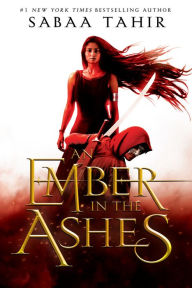





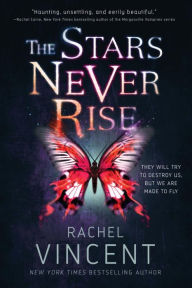





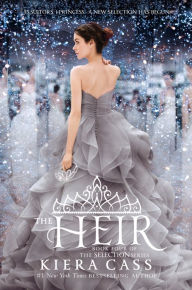



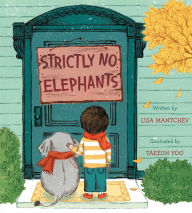

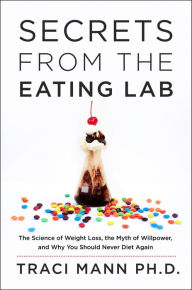



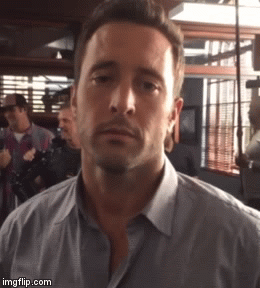
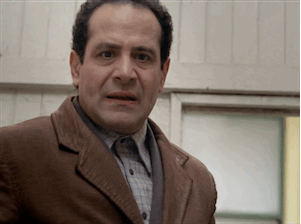
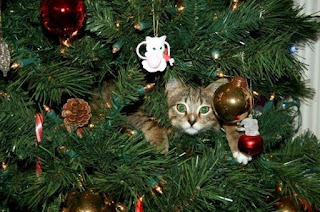



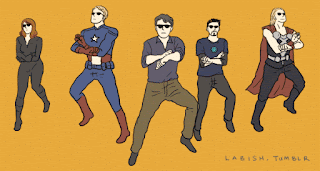
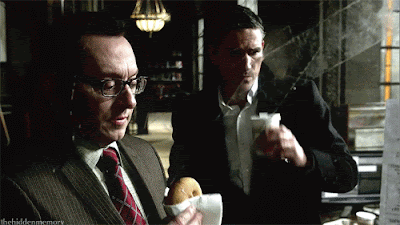
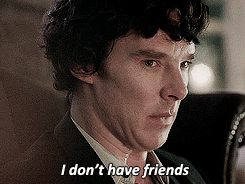
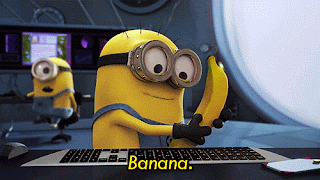
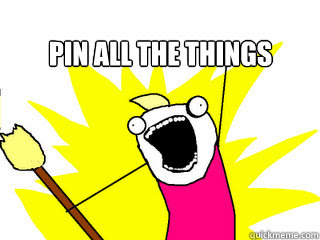



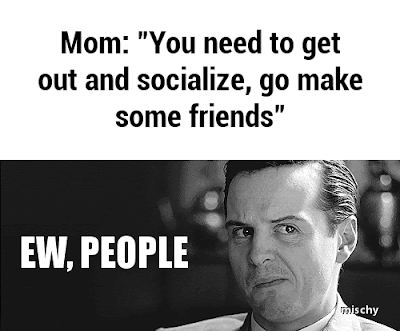

I loved this book hard! I also really liked book 2 as well. Have you read it yet?
I have heard good things about this and have it on my TBR. Hopefully get to it sooner rather than later!
I will have the review for the second book up soon!